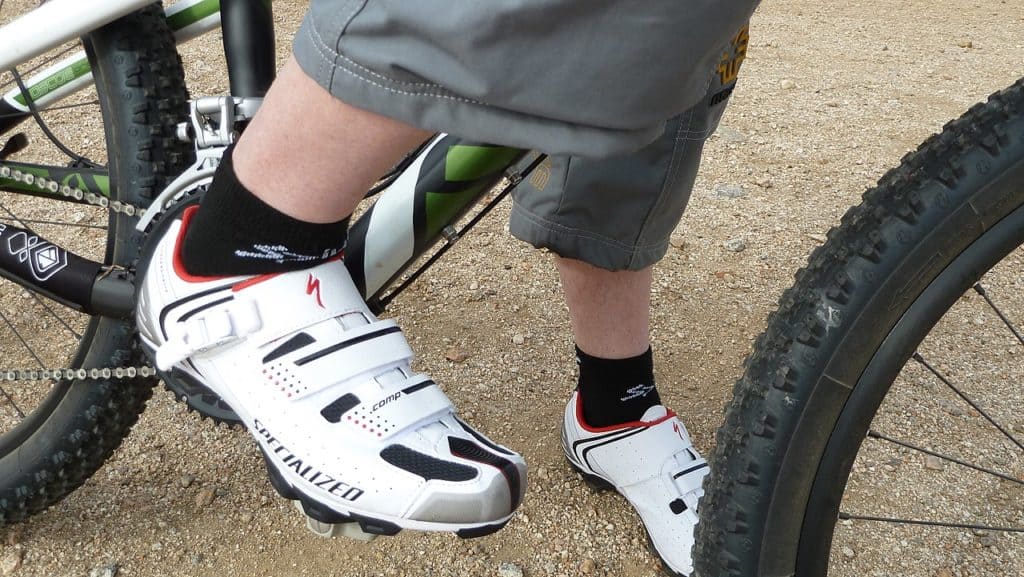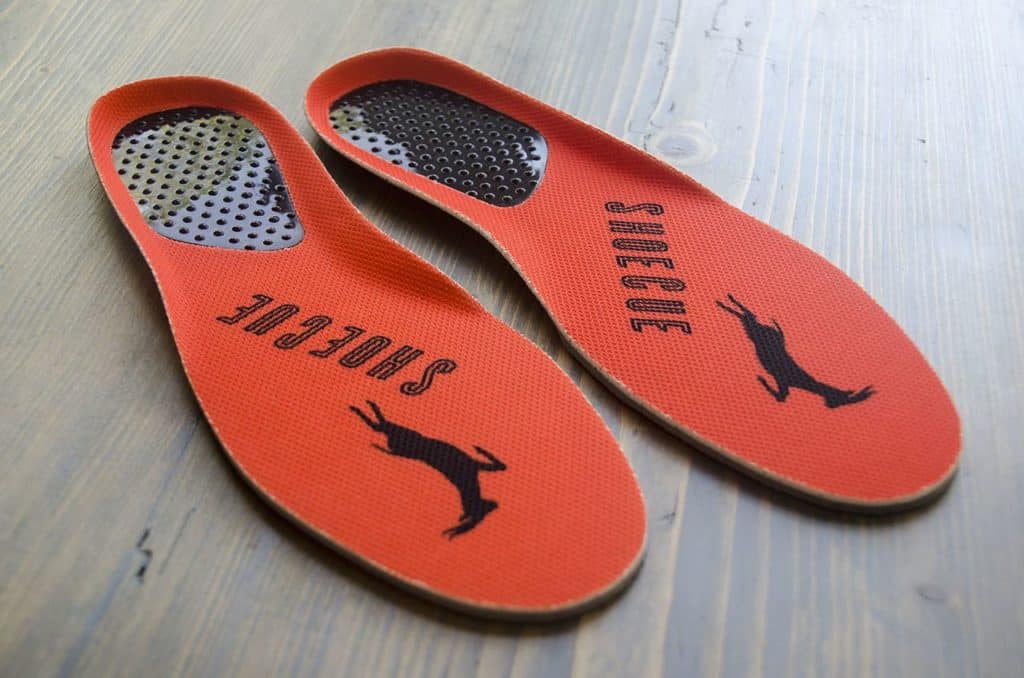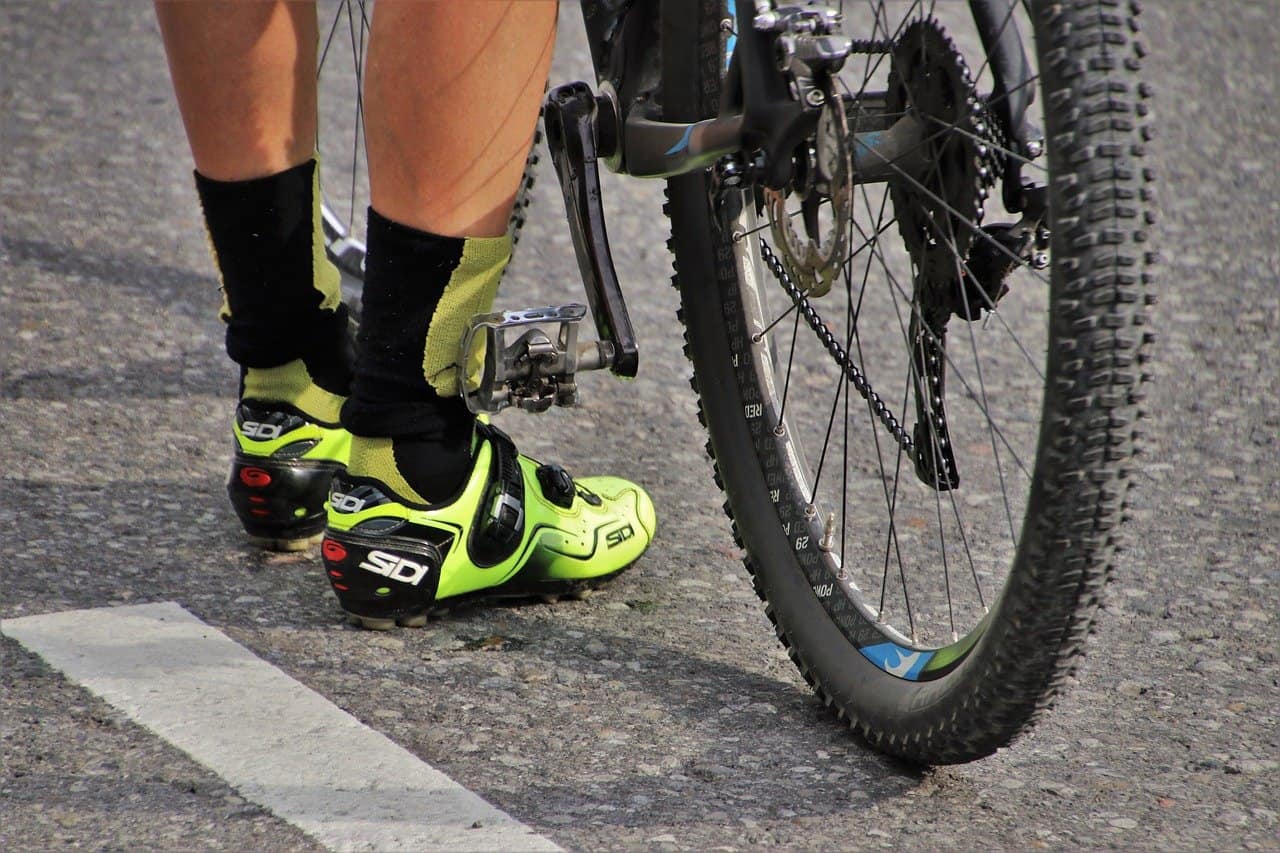Not all cycling shoes fit the same type of foot so the first step to finding the right model for you is knowing how cycling shoes should fit. Riding with shoes that don’t fit correctly can cause blisters, sores, and even injury.
This article looks at the specifics regarding how cycling shoes should fit. It examines aspects of foot shape, shoe support, closure, the tightness of shoes, and different types of shoes used in cycling.
If you are in the market for new cycling shoes, you are in the right place.
What To Consider When Buying Cycling Shoes
The Width
Cycling shoes can vary in width. Some shoes better fit riders with narrow feet, while others provide those with wider feet a more comfortable fit.
If your shoes are too tight, you may experience ingrown toenails, athlete’s foot, calluses, hammertoes, heel spurs, blisters, and bunions. Fizik, Venzo, and Sidi all make excellent shoes designed for riders with narrow feet.
Common issues that riders with narrow feet experience with wide shoes are blisters and calluses due to their feet rubbing on the sides of the shoe as they move around.
Additionally, if your shoes are too wide, you will lack the necessary support. The worst-case scenario with shoes too wide is that your foot slips from the shoe, and you experience a crash or injury.
Giro, Sidi, and Hiland make shoes highly recommended for riders with wider feet.

Sound Closure
Cycling shoes should have a proper closure. This means that the shoes fit comfortably close around your feet. Cycling shoes today can close with a variety of systems. Traditional laces are very common on cycling shoes.
Adidas and Five Ten both make cycling shoes that are closed with laces. Boa lacing is very popular in today’s cycling world as the wire laces are easy to tighten. They stay put when the Boa device is locked. They also are very durable and thus, these cycling shoes will last you for years.
Velcro or hook and loop attachments are other standard closure types on cycling shoes.

You’ll also find this combined with laces (traditional or Boa). I wore a pair of Giro’s for years where laces and straps secured the shoe on my foot, and nothing matches Dual closures.
One thing that can prevent cycling shoes from closing is if you have feet that are too wide for a shoe. If your feet are too wide, the shoes will not close comfortably. This can cause pain and discomfort any time you wear the shoes.
Outer Sole Stiffness and Upper Material
According to experts, cycling shoes with a stiff outer sole and upper material can increase your performance. Some believe that a stiff cycling shoe helps riders pedal with greater efficiency and have better power transfer.
You’ll find stiff shoes made of nylon, glass fiber, and carbon fiber with glass fiber or full carbon fiber. These shoes are costlier, and the price varies depending on the material.
In your search for a well-fitting cycling shoe, you will want to find a shoe that has a stiff outer sole and upper material. However, you do not want the shoe to be too stiff. There is a balance one must find regarding stiffness. If a shoe is too stiff, you may experience pain and discomfort.
Related: Differences Between Mountain Bike Shoes and Road Bikes Shoes
Insoles
Insoles can significantly affect the fit of any shoe. If you need additional support for high arches, flat feet, hike-a-bikes, running in cyclocross, or for added comfort, you use insoles in your shoes.
Insoles can be shock-absorbent. They can be stiff to help improve your power transfer. They can be ergonomic and conform to your foot for those that want maximum comfort. Many insoles come with multiple arch supports to best fit your foot. This helps ensure maximum comfort for your foot shape.
Overall, insoles have benefits for your feet and knees when pedaling. If a shoe fits nicely in every way, but your arches or you need extra support or shock absorption, you should look for insoles for your cycling shoe. They will help provide you with an overall better fit for your shoe!

Heel Support
Proper heel support in cycling shoes stabilizes one’s foot, adding to the comfort and also helping riders avoid blisters and calluses. You should look for MTB shoes designed for wide feet or narrow feet, specifically.
When choosing a cycling shoe with proper heel support, you will want to look for a heel that fits your shoe width.
If your cycling shoe lacks heel support, there are many different insoles available to improve your comfort in the heel area.
FAQs
Should I buy cycling shoes a size bigger?
No! You should buy cycling shoes that are your size. Buying shoes that are too big will lack proper fit and support. Your foot fill moves around as you pedal. This can cause discomfort and injury. It can also destroy power transfer and pedaling efficiency in your ride.
How much space should be in cycling shoes?
Cycling shoes should have enough space so that your foot is comfortable but doesn’t move around too much in the shoe. If your foot moves around too much, you will lack support in your arches and heels. Your pedal strokes will be affected, and you may lack efficiency and power. Additionally, wearing tight shoes can lead to blisters, calluses, knee pain, and other injuries.
Conclusion
Every shoe has specifications that make it a good fit. Cycling shoes are just the same. One must consider many aspects of fit when determining how cycling shoes should fit on their feet.
Foot width, length, and shape all affect the fit of a cycling shoe. They help determine the proper closure, heel support, insoles, and outer sole stiffness for one’s shoe. If your cycling shoes are not comfortable in these support areas, they negatively impact your performance and comfort.





